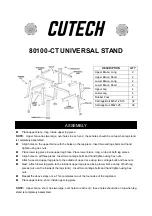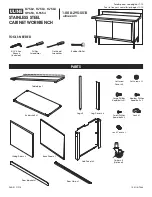
FIBRE-to-SAS/SATA RAID SUBSYSTEM
User Manual
97
6.10 Intelligent Power Management
MAID (Massive Array of Idle Disks) enabled storage allows disks which have been
inactive for a defined period of time to be placed into one of several power-saving
modes. The Logical Volumes associated with these disks remain on-line and
available to read and write data. If these disks subsequently receive a read or write
request, the storage controller will return the disks to active mode and then issue
the data commands. The host will experience a delay in accessing the volume
which can vary from under 1 second to 30 or 40 seconds depending on which
power saving mode the disk is resuming from.
For example, the storage system can implement MAID Level-0 (no real energy
savings, no impact to performance) for active data. For less active data, an
administrator can choose a user selectable setting to transition the storage system
to MAID Level-1 where power is reduced by retracting HDD read/write heads. For
even better power savings, a HDD or RAID can be put into a MAID Level-2 mode
where the speed of the drive platters is reduced. For the best power savings, the
administrator can select MAID Level-3 where a HDD or the RAID is completely
powered down or put into a suspended standby sleep mode.
6.10.1 Power Modes (MAID Levels)
Level 0: No Power Management
The device is capable of responding immediately to media access requests, and
commands complete execution in the shortest possible time.
Level 1: Idle Mode
The disk is capable of responding immediately to media access requests. A device
in Idle Mode may take longer to complete the execution of a command because it
may have to activate some circuitry. Different manufacturers have interpreted this
in different ways.
Level 2: Low Speed Mode
The Low Speed state still keeps the heads parked but the spindle motor is also
slowed to a lower spin rate (approximately 60% of normal). The disk goes into this
mode after a specified time interval. The drive can be restored to active mode by
any media access request.
Only disk drives with Advanced Power Management (APM) can support Low Speed
Mode. Disks without APM will remain in Idle Mode instead of transitioning to Low
Speed Mode. They will transition directly to Standby Mode at the end of the
Standby timeout time.
Level 3: Standby Mode
The disk interface is capable of accepting commands, but as the media may not be
immediately accessible, it could take the disk as long as 30 seconds to respond.
Summary of Contents for MGD-16FC16A
Page 1: ...FIBRE to SAS SATA RAID SUBSYSTEM User Manual Revision 1 3 ...
Page 107: ...FIBRE to SAS SATA RAID SUBSYSTEM User Manual 107 3 Click on Save to save your changes ...
Page 113: ...FIBRE to SAS SATA RAID SUBSYSTEM User Manual 113 ...
Page 114: ...FIBRE to SAS SATA RAID SUBSYSTEM 114 User Manual ...
Page 119: ...FIBRE to SAS SATA RAID SUBSYSTEM User Manual 119 ...
Page 121: ...FIBRE to SAS SATA RAID SUBSYSTEM User Manual 121 ...
















































